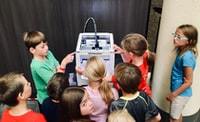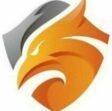
3D printing has become one of the most powerful tools in STEM education. It lets students design, experiment, prototype, and see their ideas take form. But not every 3D printer is suitable for a classroom. Schools need printers that are safe, quiet, enclosed, reliable, and easy for students of all ages to use.
This guide breaks down the best 3D printers for K–12 classrooms, STEM labs, libraries, makerspaces, and higher education programs. Whether you’re purchasing your first printer or upgrading a lab, you’ll find recommendations tailored to educational environments.
We’ll cover:
- The safest 3D printers for students
- Why enclosed printers matter
- Essential classroom-friendly features
- Quiet operation and maintenance needs
- The best materials to use with kids
- Integration tips for STEM curriculum
If your school needs help selecting a model, setting up a lab, or integrating 3D printing into your curriculum, I can help. Contact me here.
Why Classroom 3D Printers Are Different from Home Printers
Schools have unique needs that most consumer 3D printers don’t address. A classroom 3D printer must be:
- Safe: Students shouldn’t be able to touch hot components.
- Enclosed: Protects kids from burns and reduces fumes.
- Quiet: A printer shouldn’t disrupt lessons.
- Reliable: Teachers don’t have time to debug failures.
- Simple: Intuitive interface, easy filament loading, straightforward workflow.
- Low-maintenance: Schools need plug-and-play performance year-round.
Classroom printers aren’t just tools—they’re teaching platforms. They need to enable learning, not troubleshooting.
New to 3D printing? Start with this beginner-friendly explanation.
Essential Features of a Classroom-Friendly 3D Printer
Before reviewing specific printers, it helps to understand what separates a true “education-ready” printer from standard hobby machines.
1. Full Enclosure
An enclosed build chamber prevents accidental contact with hot components and reduces odors. This is required for younger grades and strongly recommended for all K–12 programs.
2. Quiet Operation
Some hobby printers are extremely loud. A classroom printer should run quietly so students can focus on the lesson—not the machine.
3. Easy Filament Loading
Teachers should not need to troubleshoot jams or clogs. The filament path should be clear and simple to load.
4. Auto Bed Leveling
A must-have for education. Manual leveling is time-consuming and error-prone—automating it improves success rates dramatically.
5. Simple Slicer Profiles
The printer should include pre-tuned profiles for common materials. Students should spend time creating—not tuning settings.
Best 3D Printers for Schools, Classrooms & Libraries (2025)
Below are recommended printer categories based on safety, reliability, and student-friendly design. (Note: I don’t list specific classroom-only brands here because this page focuses on *categories*. The actual printer selections would be integrated later into individual reviews.)
1. Enclosed FDM Printers (Best All-Around for Classrooms)
These printers offer the best balance of safety, reliability, and ease of use. Enclosures keep the build area stable and prevent accidental contact with hot components.
- Safe for younger students
- Reduced noise during operation
- Better print consistency
If your budget allows, enclosed printers should be the default choice for K–12 and STEM labs.
2. Resin Printers (Use with Older Students Only)
Resin printers offer incredible detail, ideal for engineering, biomedical, art design, and advanced CAD programs.
However, they require:
- Protective gloves
- Ventilation
- Curing stations
- Strict teacher supervision
For these reasons, resin printers are best suited for high school and university labs—not elementary or middle-school classrooms.
3. FDM Workhorse Printers (Good for Makerspaces)
Makerspaces often prioritize flexibility and throughput. These printers can run all day on PLA or PETG and produce reliable parts at scale.
They may be less “kid-friendly” but excellent for supervised labs and dedicated STEM rooms.
The Best 3D Printing Materials for Student Projects
When printing in schools, it’s important to choose materials that are safe, predictable, and easy to work with.
- PLA: Best for 90% of classroom projects. Low odor, easy to print, no enclosure required.
- PETG: Slightly more durable. Good for older students working on functional parts.
- TPU: Flexible material for advanced classes. Fun but more challenging to print.
Materials like ABS should be avoided unless the room has proper ventilation and students are older.
Resins should be used only with high-school engineering programs due to chemical handling requirements.
How 3D Printers Support STEM, STEAM & Project-Based Learning
3D printing reinforces a wide variety of academic subjects and skills. When integrated correctly, it supports:
- Math: Geometry, scaling, measurement, symmetry
- Science: Engineering basics, material properties, physics
- Technology: CAD modeling, slicing, digital fabrication
- Art: 3D design, sculpture, animation, architecture
- Engineering: Prototyping, iteration, design constraints
Project-based learning becomes far more powerful when students can create physical objects that demonstrate understanding.
Tip: Let students fail. Small mistakes in prints teach iteration, troubleshooting, and improvement.
Budgeting, Grants & Administrative Considerations
Schools often need to plan purchases around grant cycles, state funding, or PTO budgets. Here are factors to consider:
- Total cost of ownership: Filament, spare parts, nozzles, maintenance.
- Teacher time: Choose printers that do not require daily calibration.
- Network requirements: Some printers need Wi-Fi; others use SD cards.
- Safety documentation: Important for grant applications.
- Warranty/Support: Many classroom-focused printers offer educator-specific support.
If you need help preparing a quote or justification letter for administration, I can assist. Reach out here.
A Practical 3D Printing Setup for Schools
Below is a simple setup that works for most classrooms:
| Component | What It’s For | Notes |
|---|---|---|
| Enclosed FDM Printer | General student use | Quiet, safe, easy to supervise |
| Extra Nozzles + Maintenance Tools | Keeping the printer running smoothly | Minimal cost, high value |
| PLA Filament | Everyday prints | Safe, low-odor, kid-friendly |
| Simple CAD Software | Student design work | TinkerCAD is free and perfect for K–12 |
Schools with advanced STEM programs may add a resin printer or 3D scanner later, but these are optional—not required for most K–12 programs.
Need Help Choosing a Classroom 3D Printer?
If your school is building (or upgrading) a STEM lab, I can help you select safe, reliable equipment and plan a smooth rollout.
Contact me here and share:
- Your grade level(s)
- Your budget
- Your curriculum goals
- Your space/safety requirements
I can provide a tailored recommendation you can share with administrators or grant reviewers.
FAQ: 3D Printers for Education
Are 3D printers safe for elementary school students?
Yes, as long as the printers are enclosed and properly supervised. Open-frame printers are not recommended for younger students.
What is the best material for students?
PLA. It’s safe, low-odor, easy to print, and perfect for most classroom projects.
How many 3D printers should a school have?
A single printer can support a small classroom, but two or more printers reduce bottlenecks and allow simultaneous printing during projects.
Do schools need resin printers?
Not usually. Resin printers are best reserved for high school engineering or art programs due to the need for gloves, cleaners, and curing stations.
What is the easiest CAD software for students?
TinkerCAD (free, browser-based) is ideal for K–12. Older students may use Fusion 360, Onshape, or SolidWorks.

